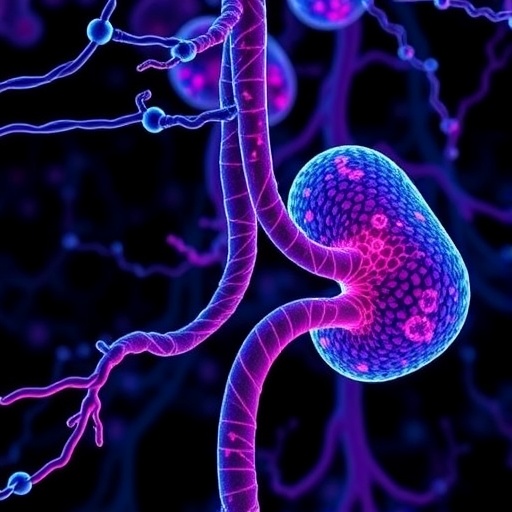Molecules 10,000 times narrower than the width of a human hair could hold the key to making possible wooden skyscrapers and more energy-efficient paper production, according to research published today in the journal Nature Communications. The study, led by a father and son team at the Universities of Warwick and Cambridge, solves a long-standing mystery of how key sugars in cells bind to form strong, indigestible materials.
The two most common large molecules – or 'polymers' – found on Earth are cellulose and xylan, both of which are found in the cell walls of materials such as wood and straw. They play a key role in determining the strength of materials and how easily they can be digested.
For some time, scientists have known that these two polymers must somehow stick together to allow the formation of strong plant walls, but how this occurs has, until now, remained a mystery: xylan is a long, winding polymer with so-called 'decorations' of other sugars and molecules attached, so how could this adhere to the thick, rod-like cellulose molecules?
"We knew the answer must be elegant and simple," explains Professor Paul Dupree from the Department of Biochemistry at the University of Cambridge, who led the research. "And in fact, it was. What we found was that cellulose induces xylan to untwist itself and straighten out, allowing it to attach itself to the cellulose molecule. It then acts as a kind of 'glue' that can protect cellulose or bind the molecules together, making very strong structures."
The finding was made possible due to an unexpected discovery several years ago in Arabidopsis, a small flowering plant related to cabbage and mustard. Professor Dupree and colleagues showed that the decorations on xylan can only occur on alternate sugar molecules within the polymer – in effect meaning that the decorations only appear on one side of xylan. This led the team of researchers to survey other plants in the Cambridge University Botanic Garden and discover that the phenomenon appears to occur in all plants, meaning it must have evolved in ancient times, and must be important.
To explore this in more detail, they turned to an imaging technique known as solid state nuclear magnetic resonance (ssNMR), which is based on the same physics as hospital MRI scanners, but can reveal structure at the nanoscale. However, while ssNMR can image carbon, it requires a particular heavy isotope of carbon, carbon-13. This meant that the team had to grow their plants in an atmosphere enriched with a special form of carbon dioxide – carbon-13 dioxide.
Professor Ray Dupree – Paul Dupree's father, and a co-author on the paper – supervised the work at the University of Warwick's ssNMR laboratory. "By studying these molecules, which are over 10,000 times narrower than the width of a human hair, we could see for the first time how cellulose and xylan slot together and why this makes for such strong cell walls."
Understanding how cellulose and xylan fit together could have a dramatic effect on industries as diverse as biofuels, paper production and agriculture, according to Paul Dupree.
"One of the biggest barriers to 'digesting' plants – whether that's for use as biofuels or as animal feed, for example – has been breaking down the tough cellular walls," he says. "Take paper production – enormous amounts of energy are required for this process. A better understanding of the relationship between cellulose and xylan could help us vastly reduce the amount of energy required for such processes."
But just as this could improve how easily materials can be broken down, the discovery may also help them create stronger materials, he says. There are already plans to build houses in the UK more sustainably using wood, and Paul Dupree is involved in the Centre for Natural Material Innovation at the University of Cambridge, which is looking at whether buildings as tall as skyscrapers could be built using modified wood.
###
The research was funded by the Biotechnology and Biological Sciences Research Council (BBSRC).
Reference
Simmons, TJ et al. Folding of xylan onto cellulose fibrils in plant cell walls revealed by solid-state NMR. Nature Communications; Date; DOI: 10.1038/ncomms13902
Media Contact
Craig Brierley
[email protected]
44-122-376-6205
@Cambridge_Uni
http://www.cam.ac.uk
############
Story Source: Materials provided by Scienmag



